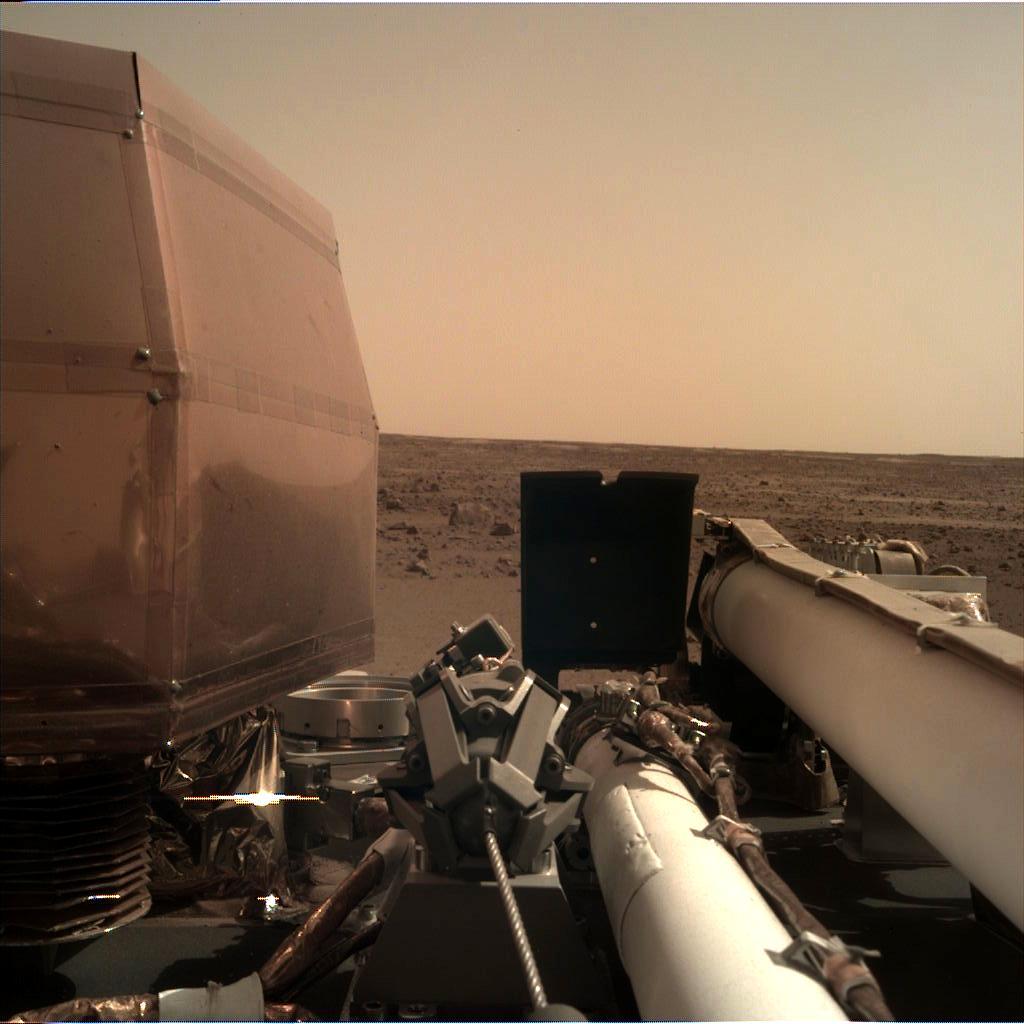When most people think about robots in space, they picture courageous helper androids battling imperial forces in a galaxy far, far away. But the reality is quite different, and Maxar is leading the charge in creating that reality.
For example, back in September I visited the SSL Robotics team out in Pasadena, California. Did you know that this team has built robotic arms for five Mars rovers with a sixth under construction for the Mars 2020 mission? The latest arm recently arrived on the red planet and successfully began operations. The team in Pasadena does some amazing feats of mechanical design, creating arms that are incredibly nimble, with up to seven degrees of freedom and built to endure the harsh environment of space, which ranges in temperature from -274° F to 257° F. Part of this group is in Boulder (just down the road from Maxar HQ), as well as NASA’s Johnson Space Center in Houston, Texas.

Most are familiar with our MDA company’s legacy in large-scale space robotics, such as the Canadarm on the Space Shuttle and Canadarm2 on the International Space Station (ISS), but one of our proudest and less known accomplishments is the 2008 delivery of Dextre, a robotic handyman on the ISS that performs various maintenance tasks, including changing batteries and replacing cameras on the Station. The MDA team has vast experience in robotic control operations in space, safely operating around humans more than anyone in the world. And it may be the only company in the world with a picture of its product on national currency.

Maxar companies are currently working on a wide range of vital space robotics programs. MDA is supporting NASA’s Lunar Gateway program — a human crew-tended spaceport in lunar orbit that will function as an access point to the Moon and deep space. MDA has provided design concepts to the Canadian Space Agency for the AI-powered robotics on the Gateway. If the Canadian government decides to participate in the program (and we encourage them to sign up without delay), “Canadarm3” would play a critical role in Gateway assembly, logistics, external maintenance and science activities and spacewalks. The proposed robotic system includes two robotic manipulators: a large heavy-lifting arm and a small dexterous arm.
MDA was also recently selected to provide a conceptual design of a rover mobility system and sample acquisition system planned to explore Mars and acquire samples that will be returned to Earth. The ‘Sample Fetch Rover’ is planned to be part of a joint ESA-NASA Mars Sample Return campaign between 2020 and 2030.
Meanwhile, SSL has been working together with NASA in a public-private partnership to – for the first time in history – enable spacecraft components to be assembled on orbit. The program, called Dragonfly, recently completed a ground demonstration phase. The Dragonfly capability will enable entirely new architectures and capabilities for government and commercial missions. Transferring the assembly process to space means the satellite can use larger and more powerful components that might not fit into a standard rocket fairing when fully assembled.
SSL is also partnering with DARPA to build a spacecraft and robotic arms for the Robotic Servicing of Geosynchronous Satellites (RSGS) program. RSGS will travel to the GEO arc, some 22,000 miles from Earth where more than 300 communications satellites provide essential services such as broadband internet and TV distribution. These spacecraft, often valued at upwards of $300 million, are sent to a graveyard orbit when they run out of fuel or when their technology becomes obsolete. When RSGS launches just a few years from now, we will be able to robotically refuel, repair and upgrade satellites that would otherwise be discarded.
Finally, SSL is building the spacecraft and robotic arms for NASA’s Restore-L Low Earth Orbit (LEO) servicing mission, which will refuel a government-owned satellite and demonstrate fundamental capabilities for future NASA missions.
But what does all this mean for the future? Well, SpaceX is developing the Big Falcon Rocket (BFR) with a focus on putting humans on Mars. It will dramatically lower the cost of putting humans there (or on the moon, or into space in general). But sending humans to Mars requires the construction of much infrastructure to keep them alive. Maxar’s space robotics systems can be sent in advance to build the habitats and way stations that will be essential to sustaining human life in hostile environments.
With advanced robotics and autonomous systems, new worlds will be opened to humankind. Imagine if you had to get up from the couch every time you wanted to change the channel on your television. Maybe someday, building civilizations in other star systems will be as easy as clicking the remote control or swiping an app on your phone (some warp drive required – or patience). We think that advances in space robotics are essential to making the new space renaissance a reality.